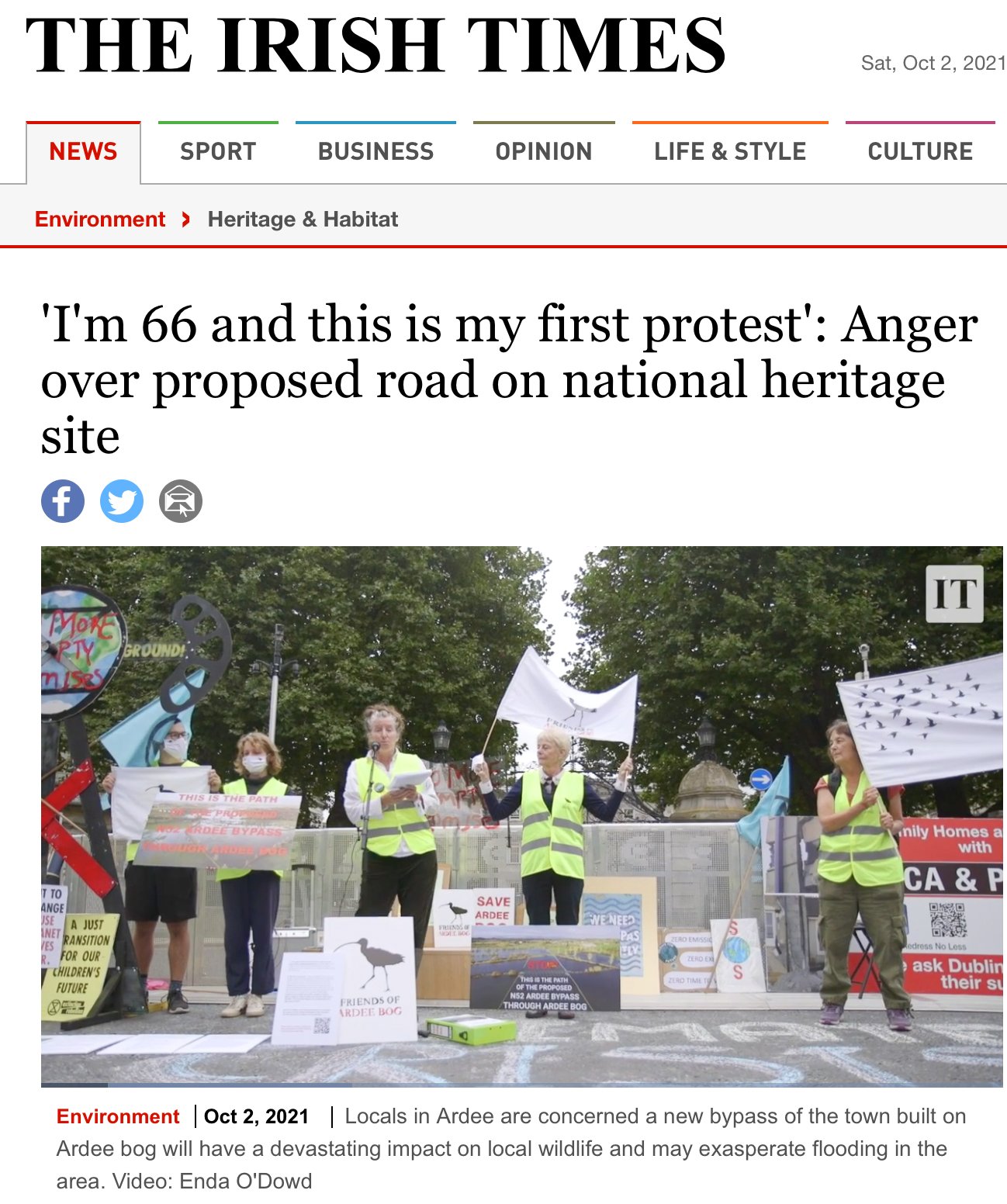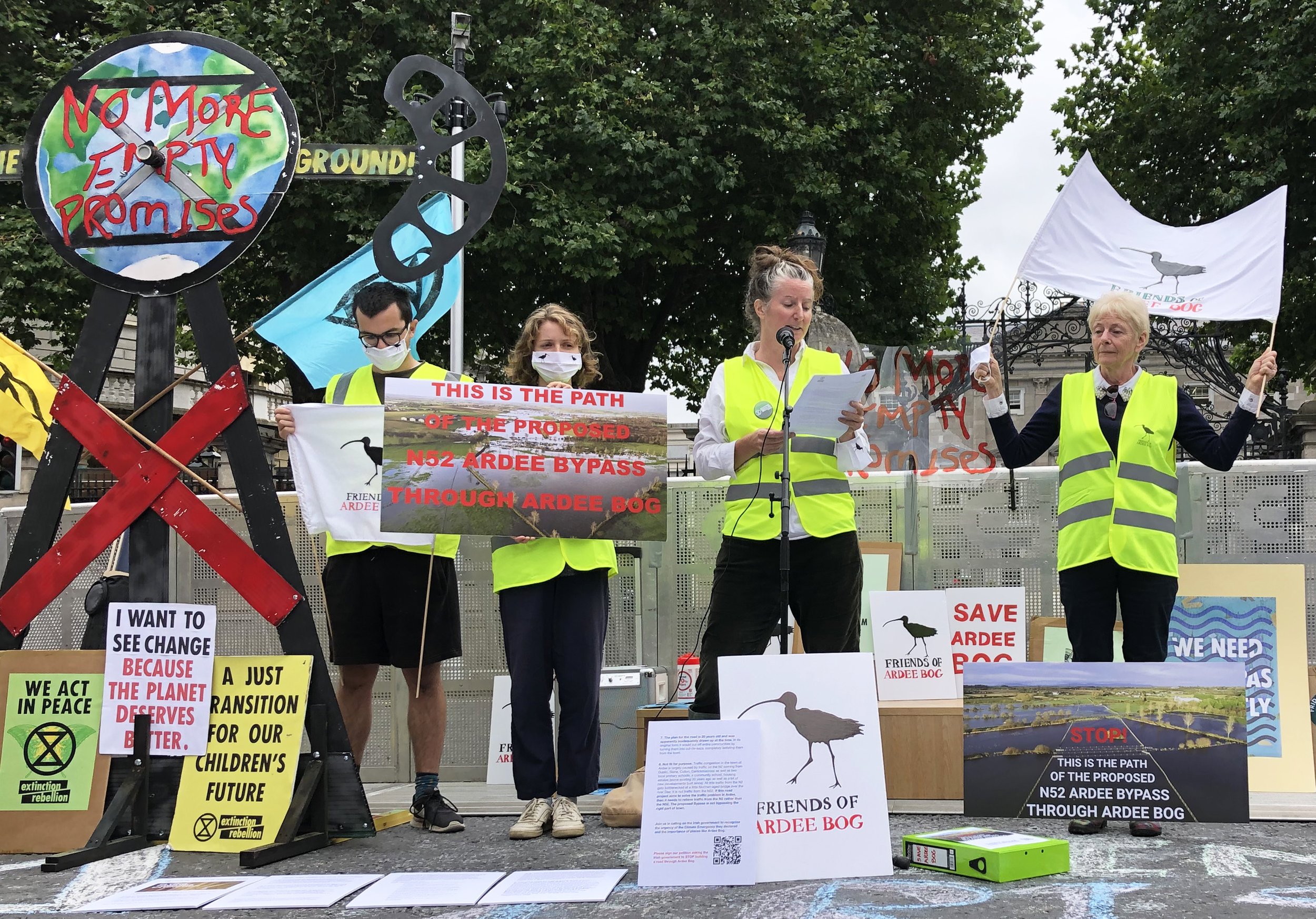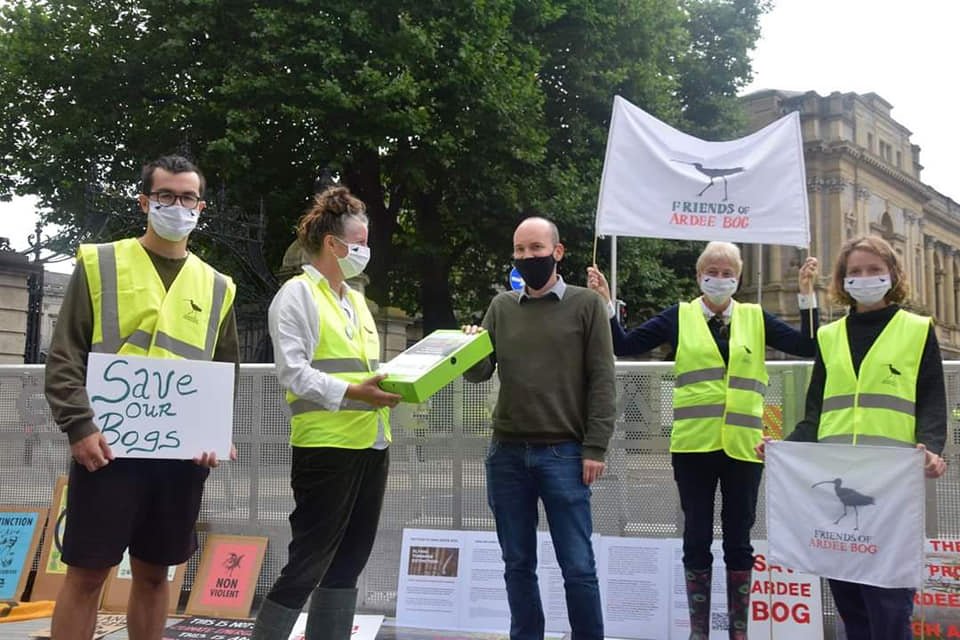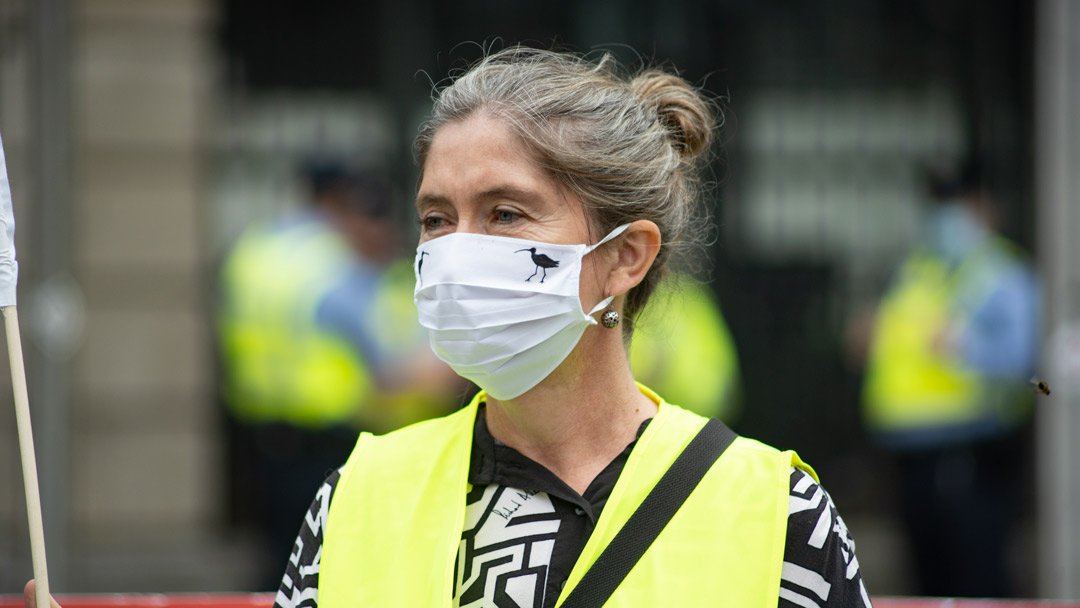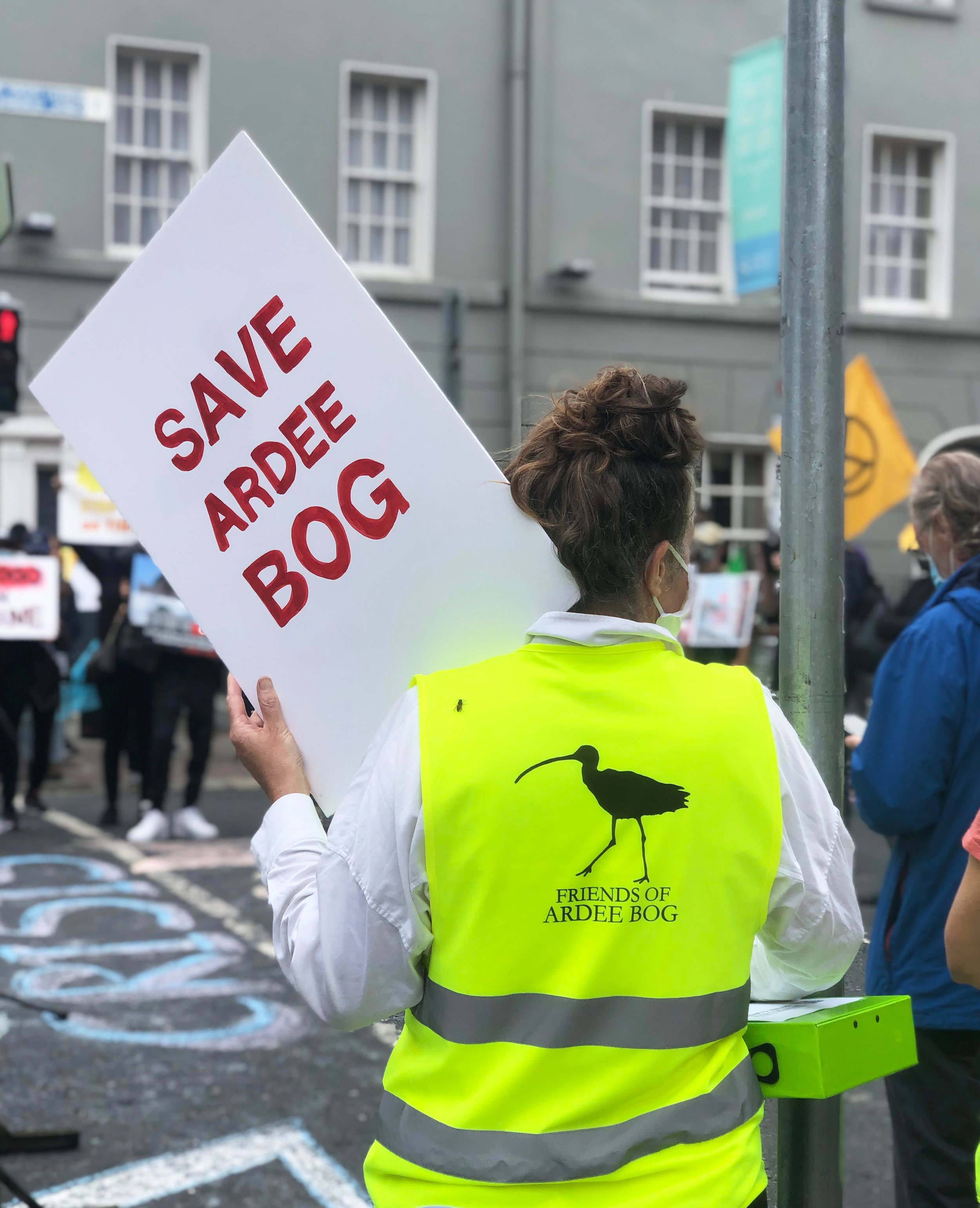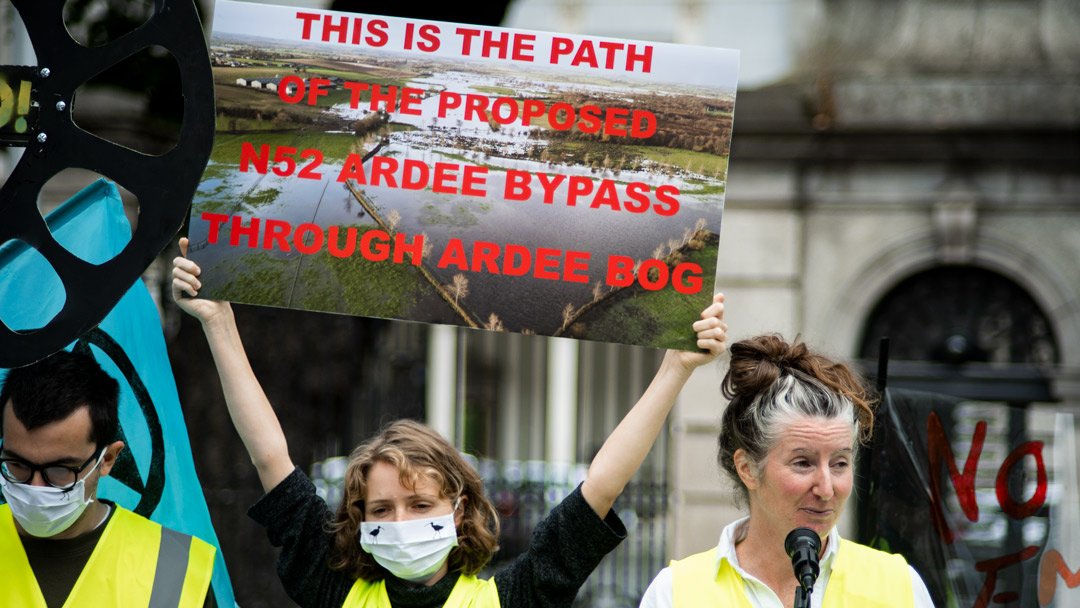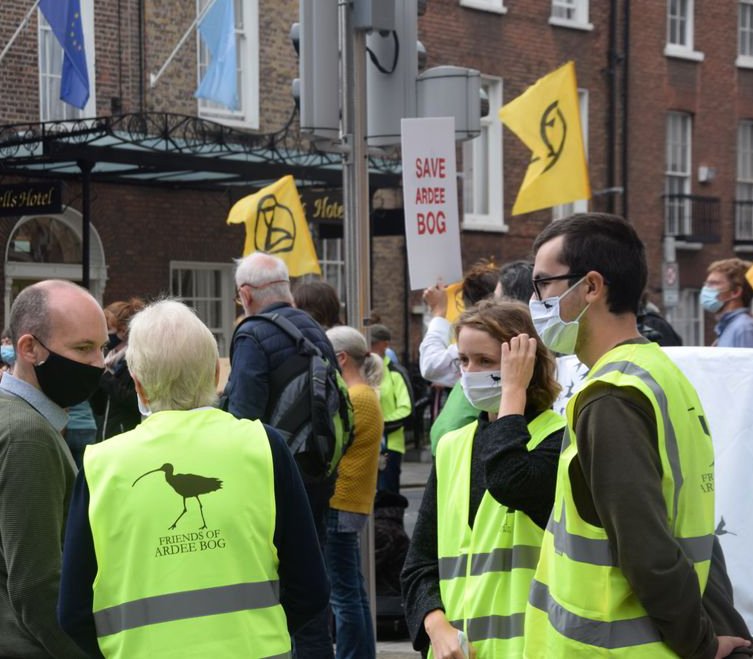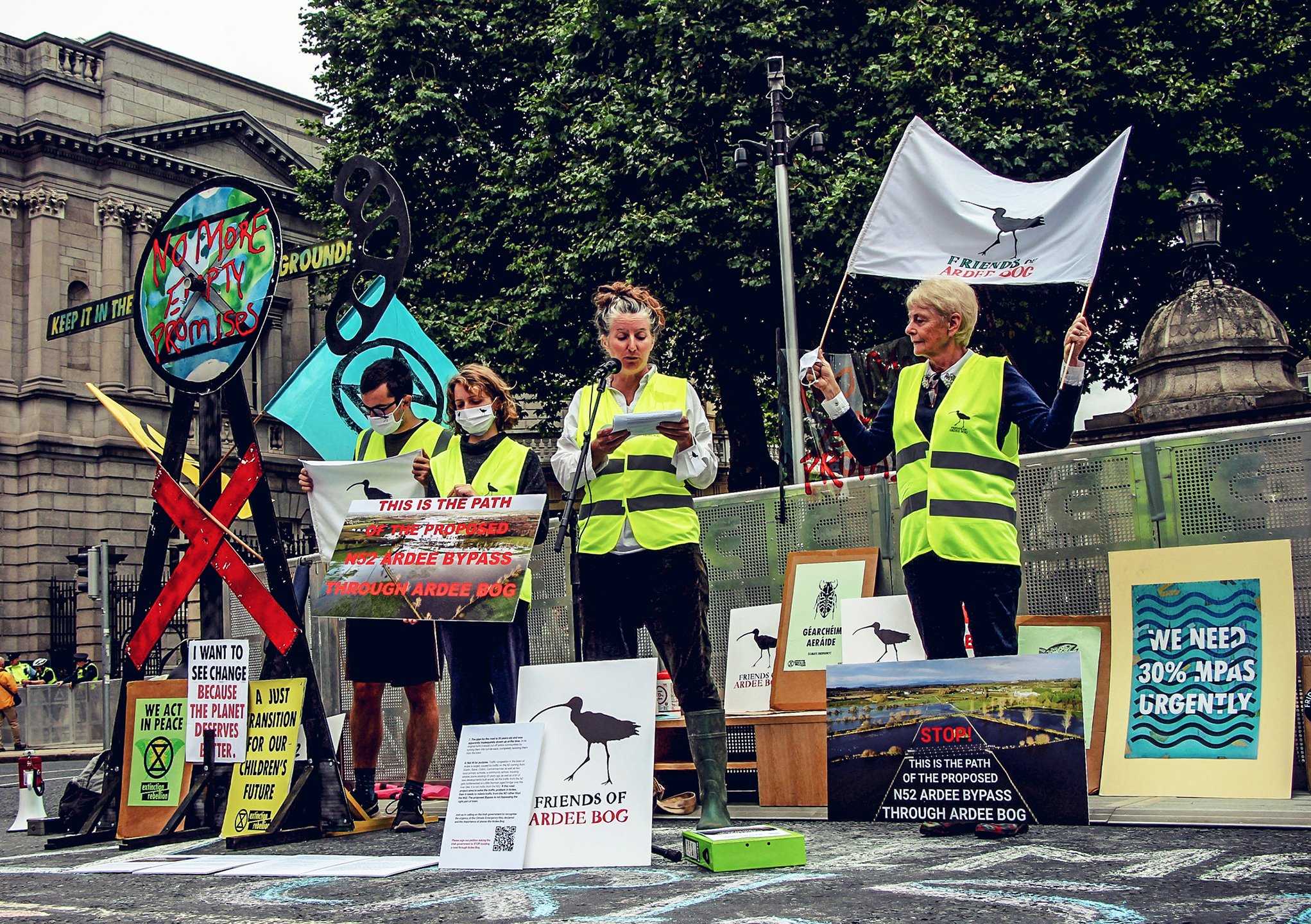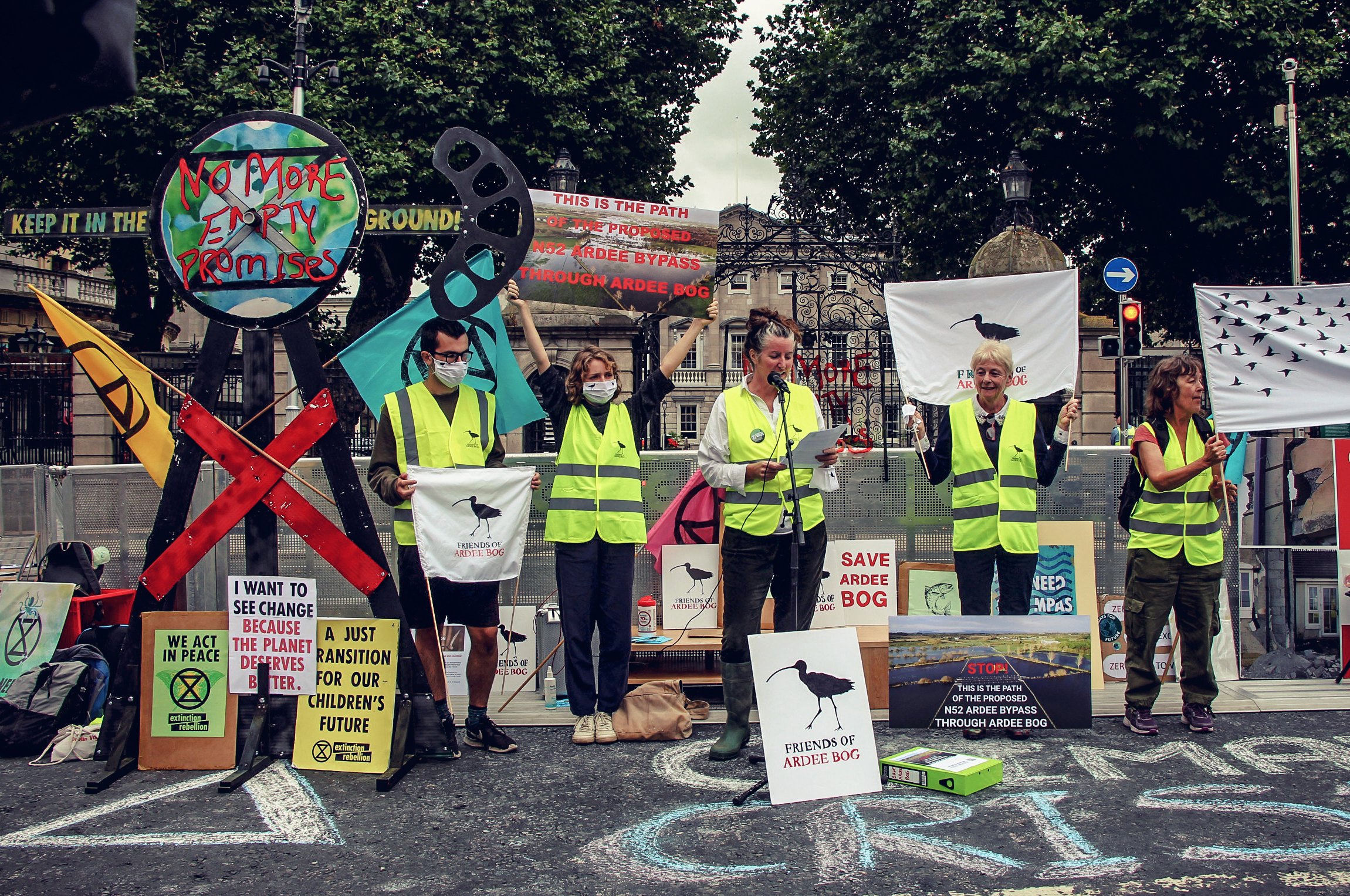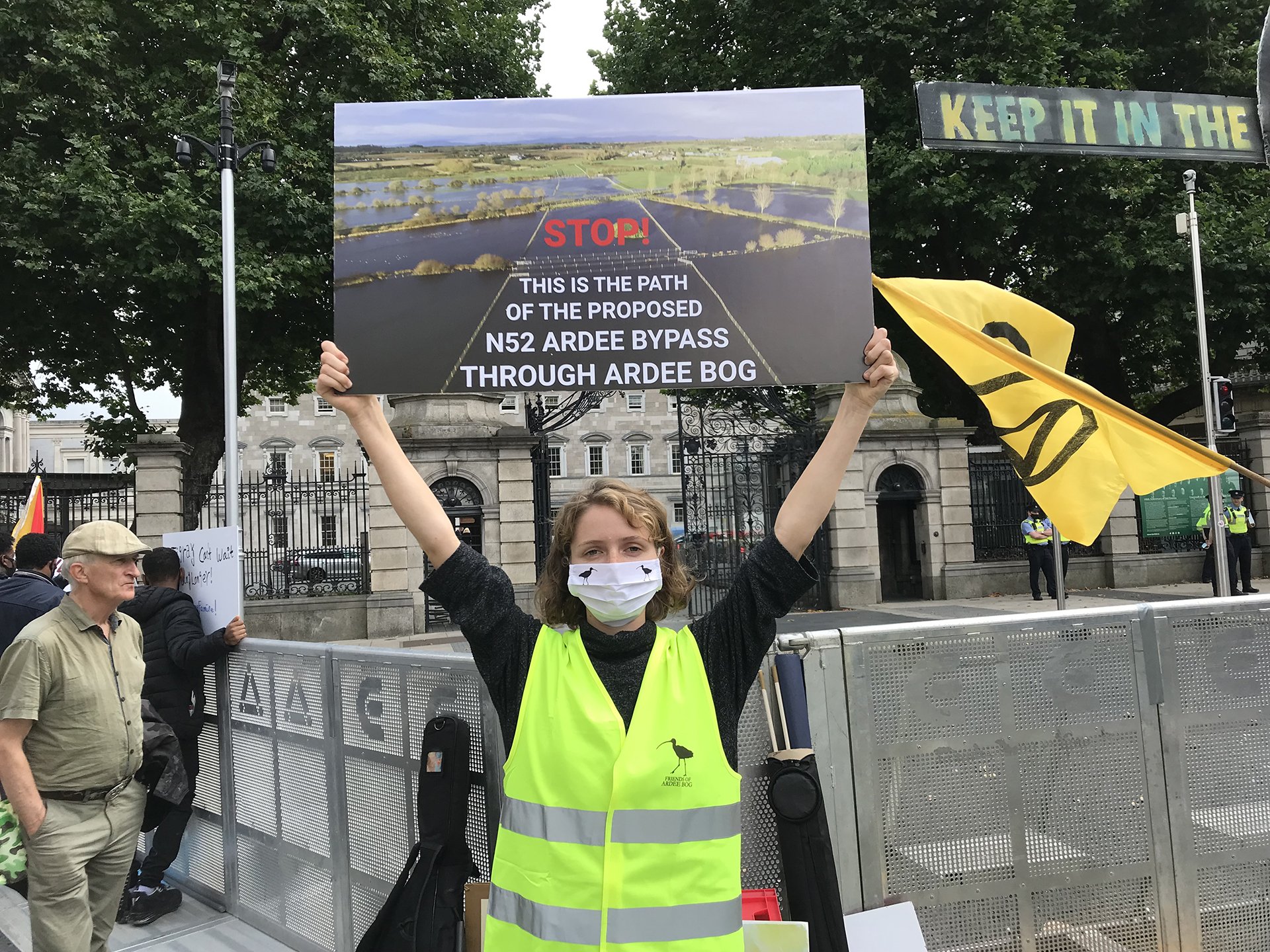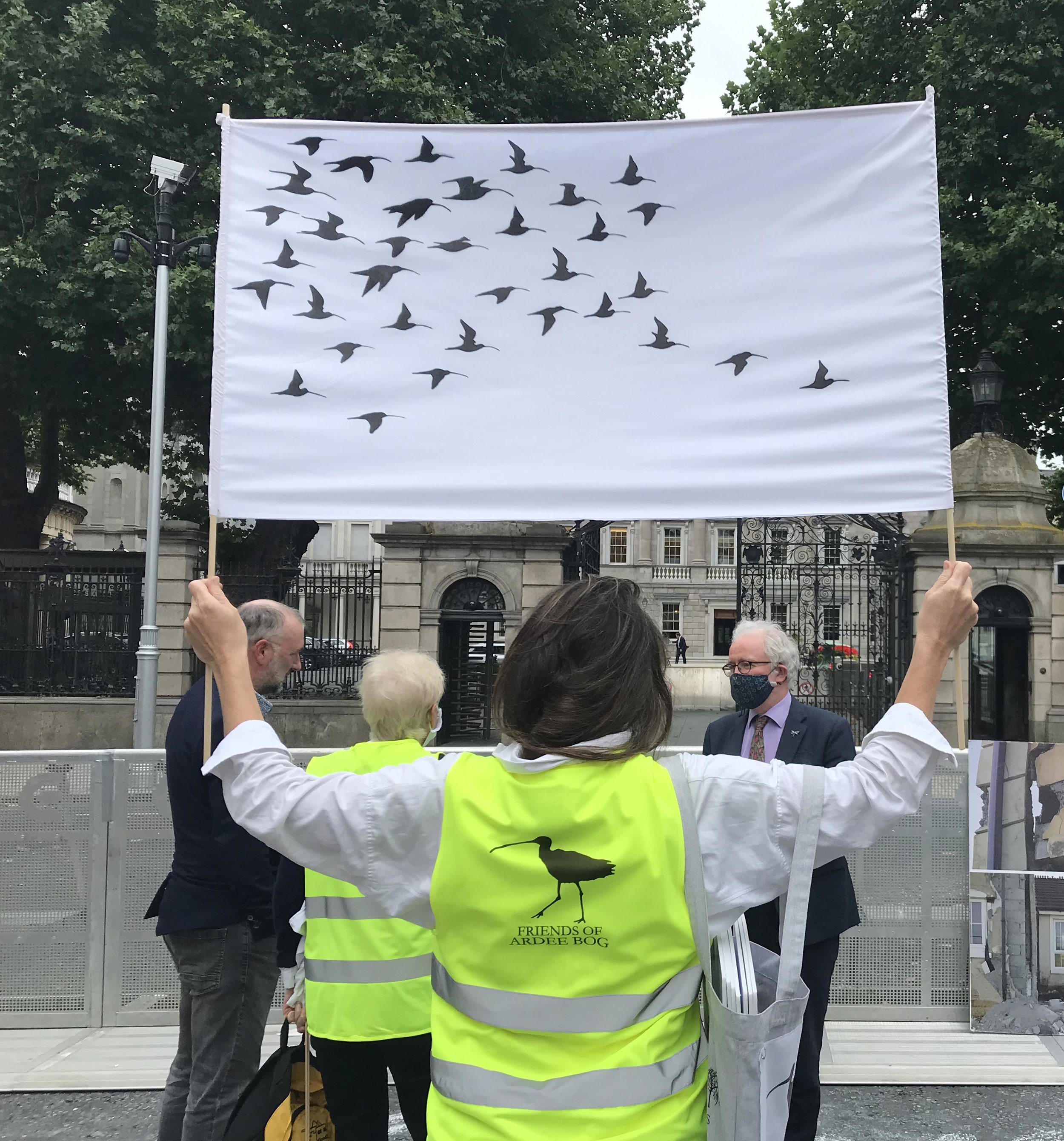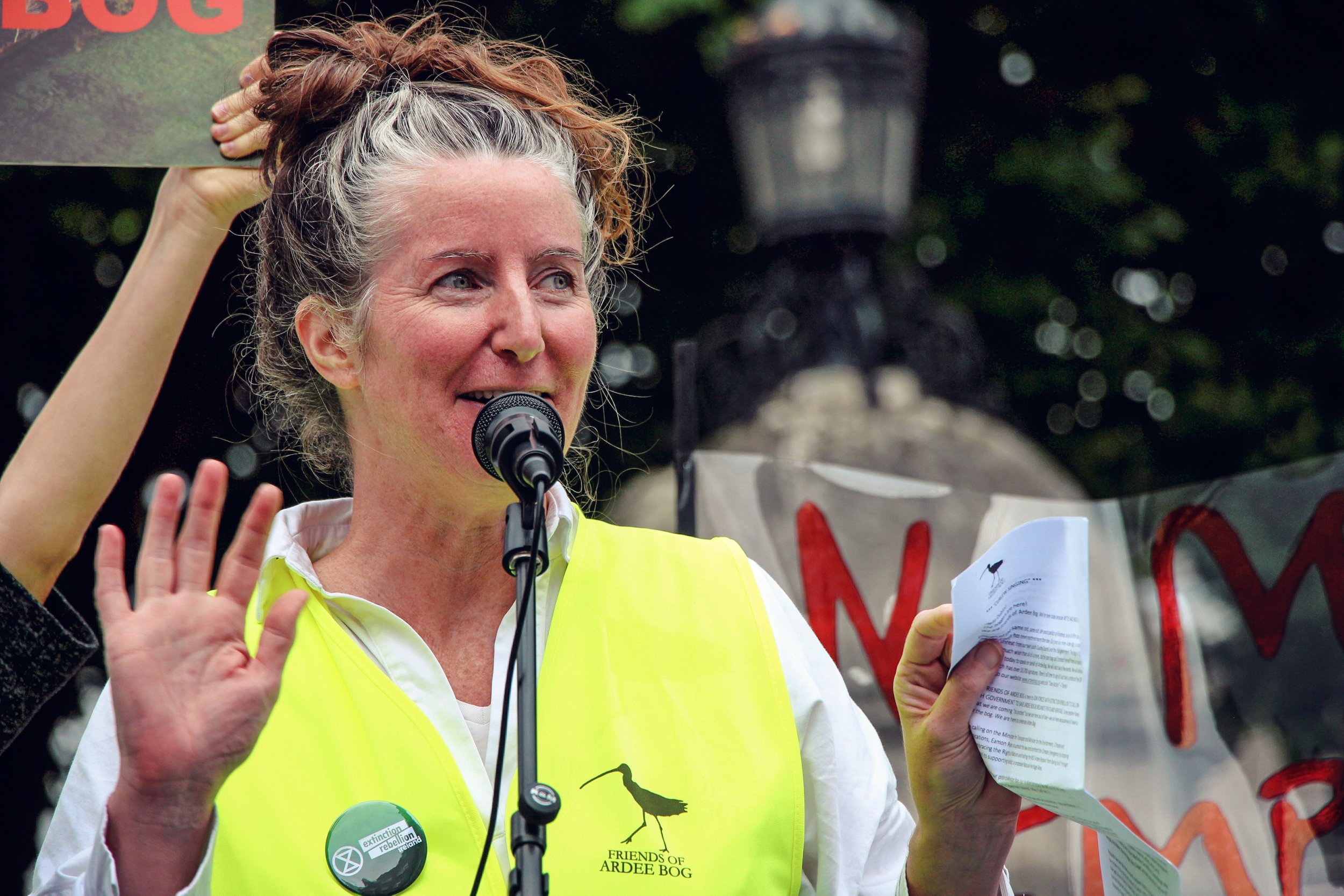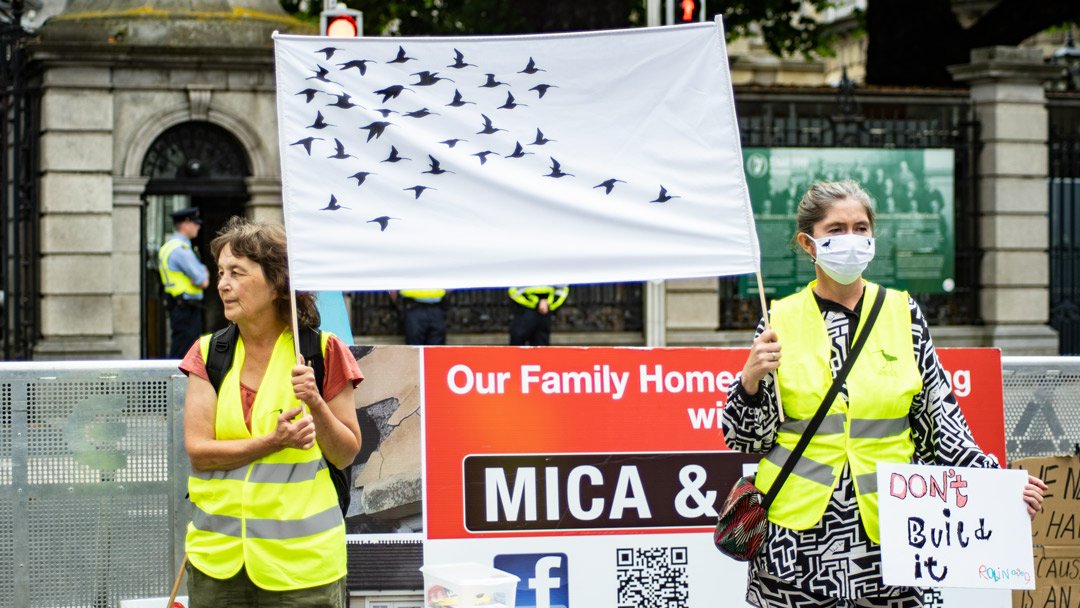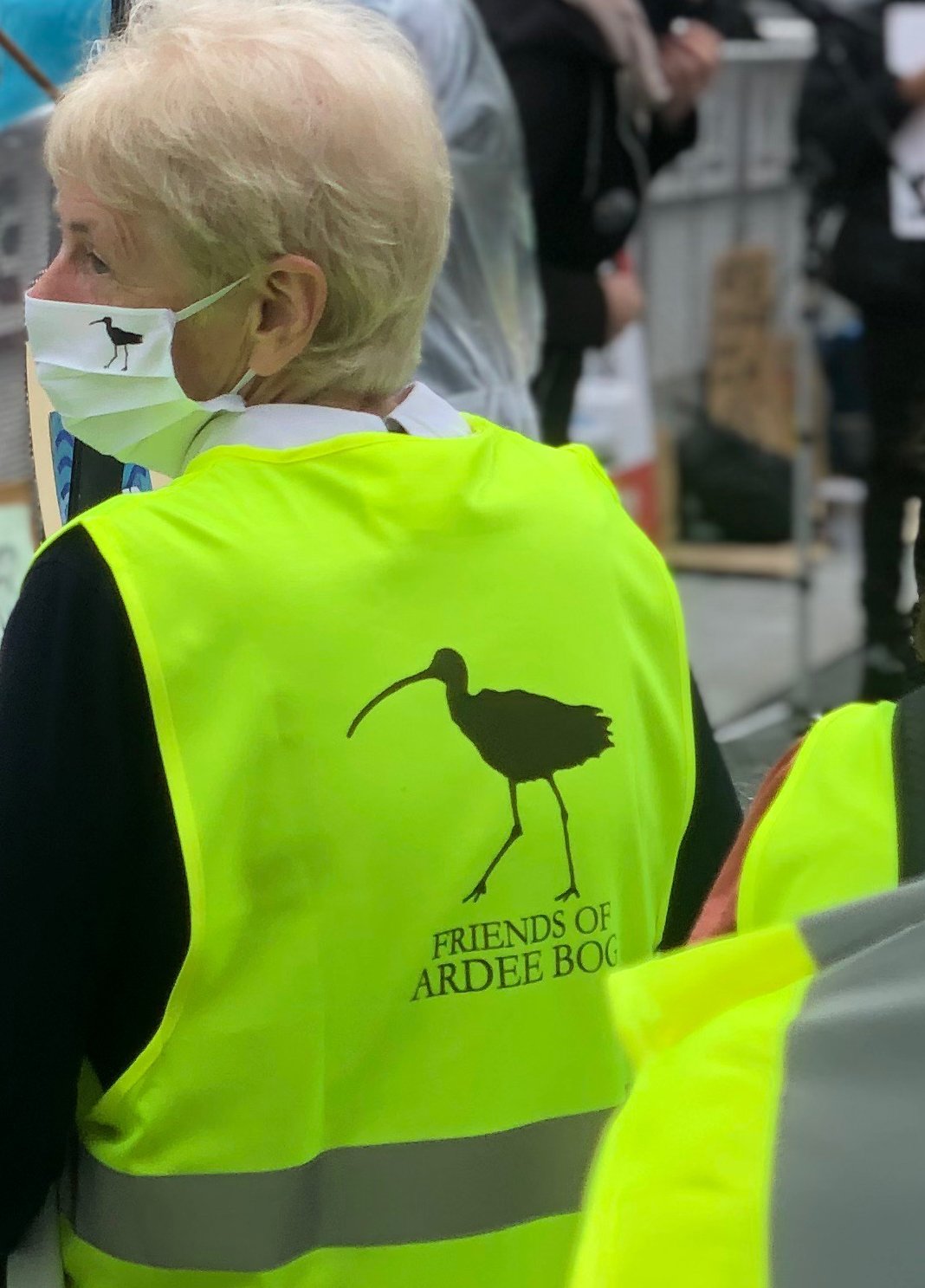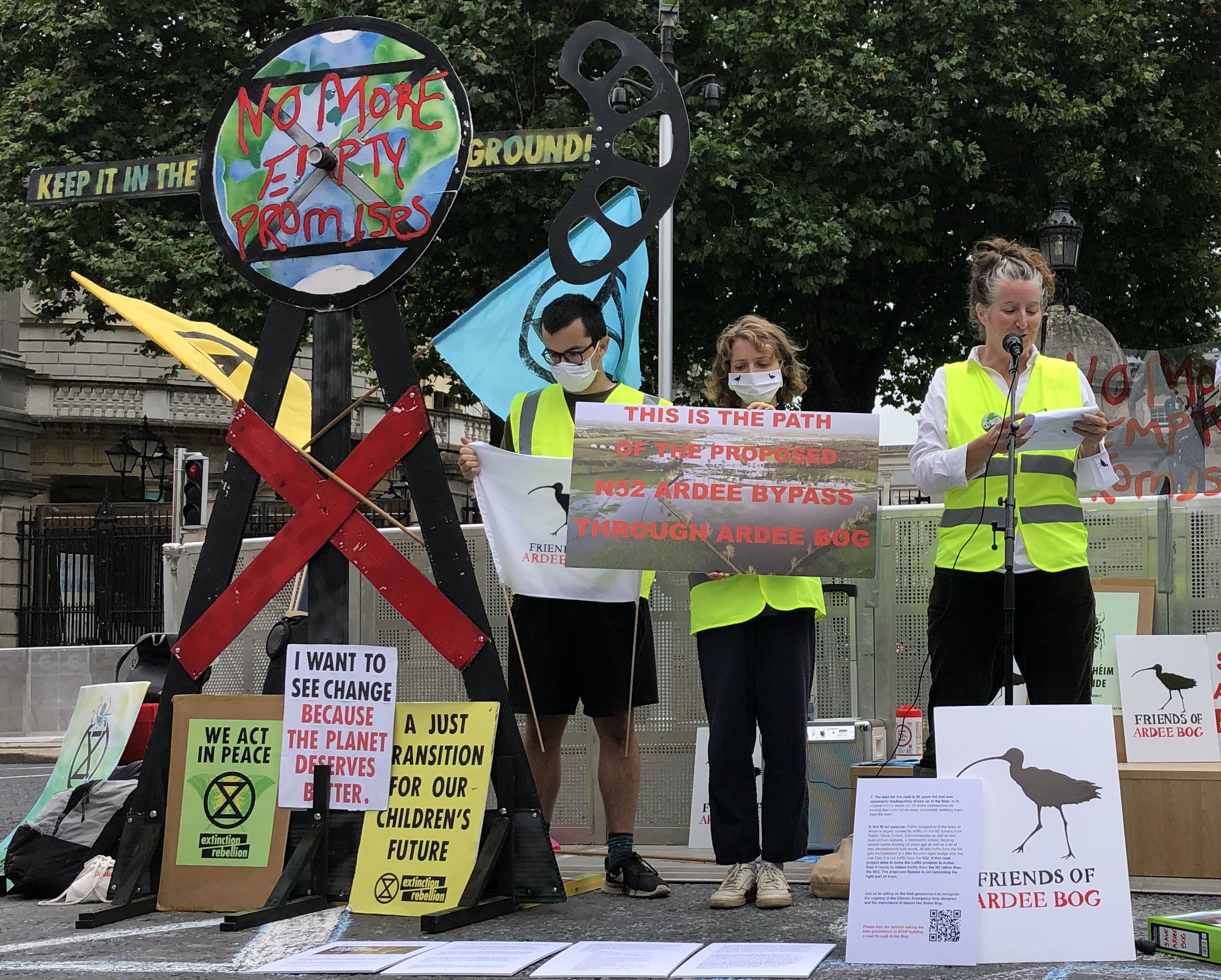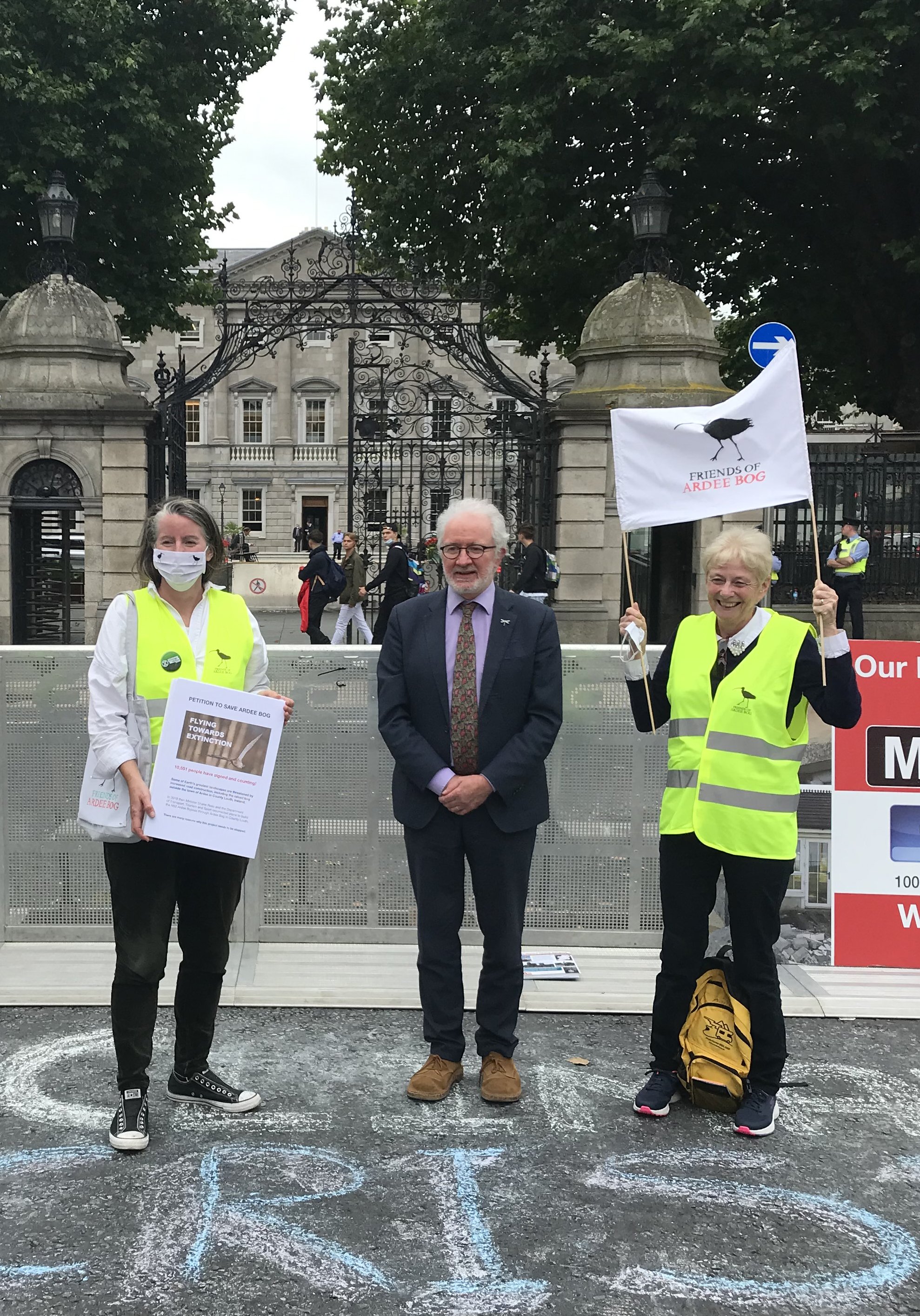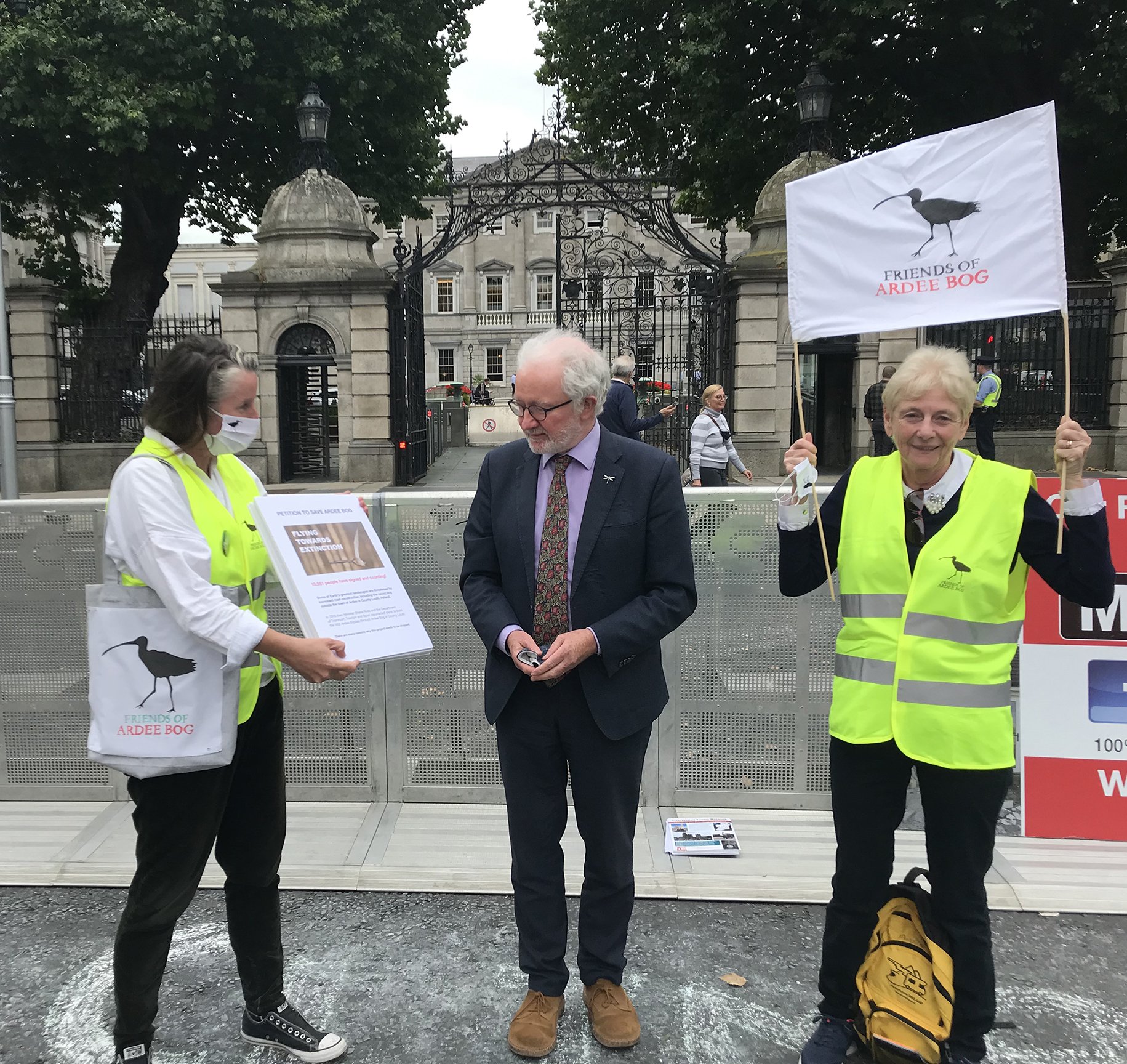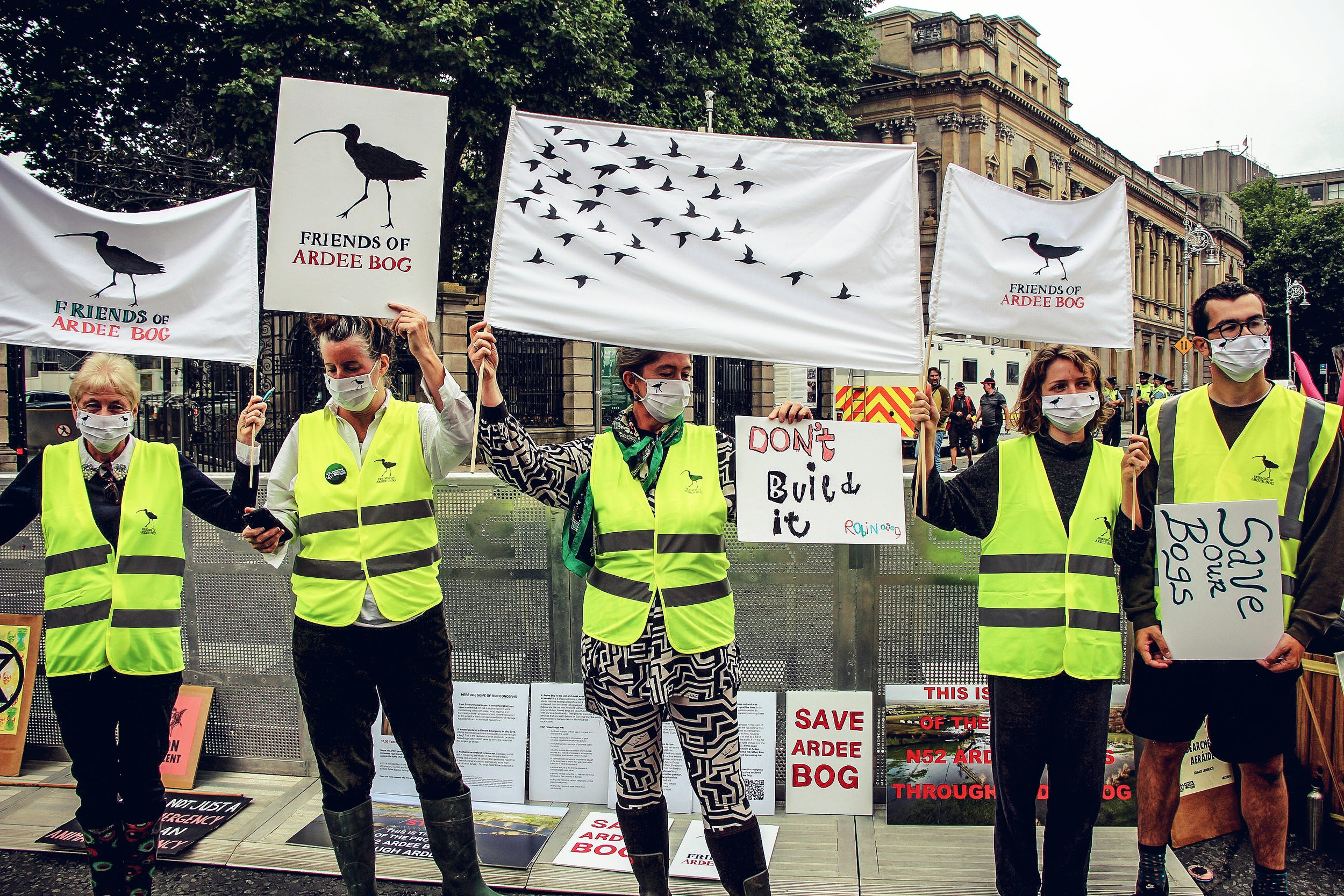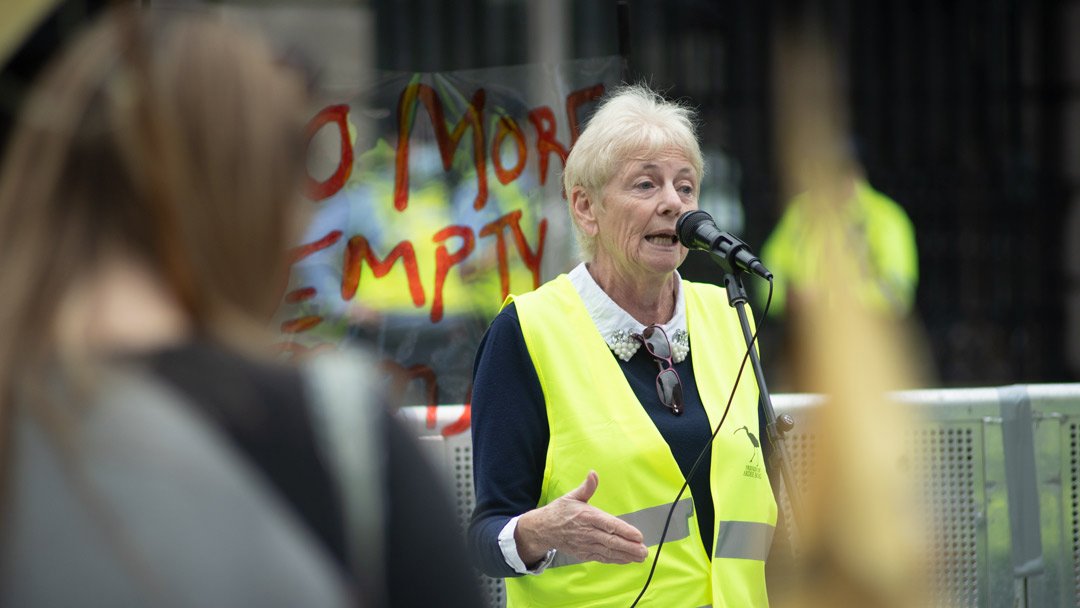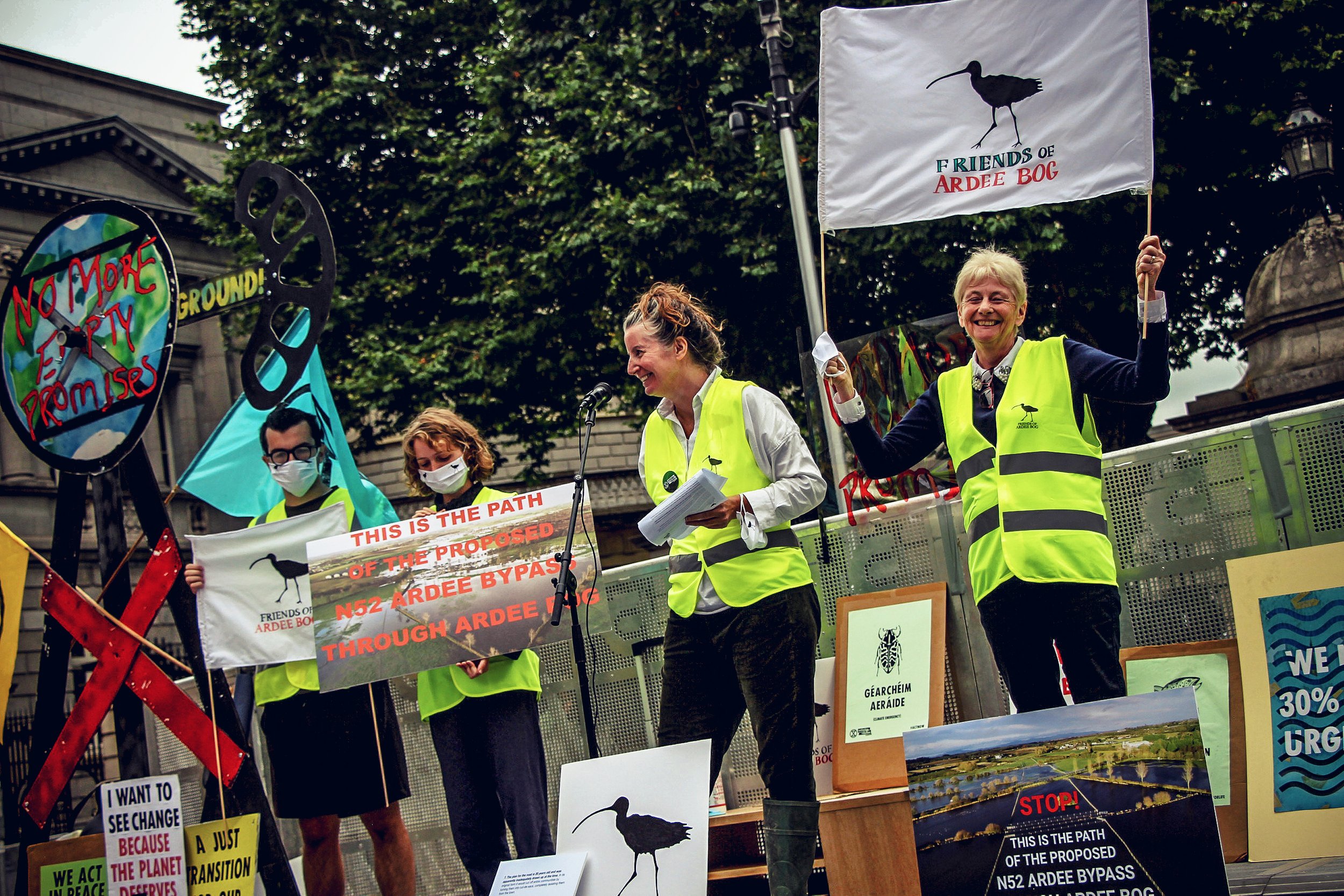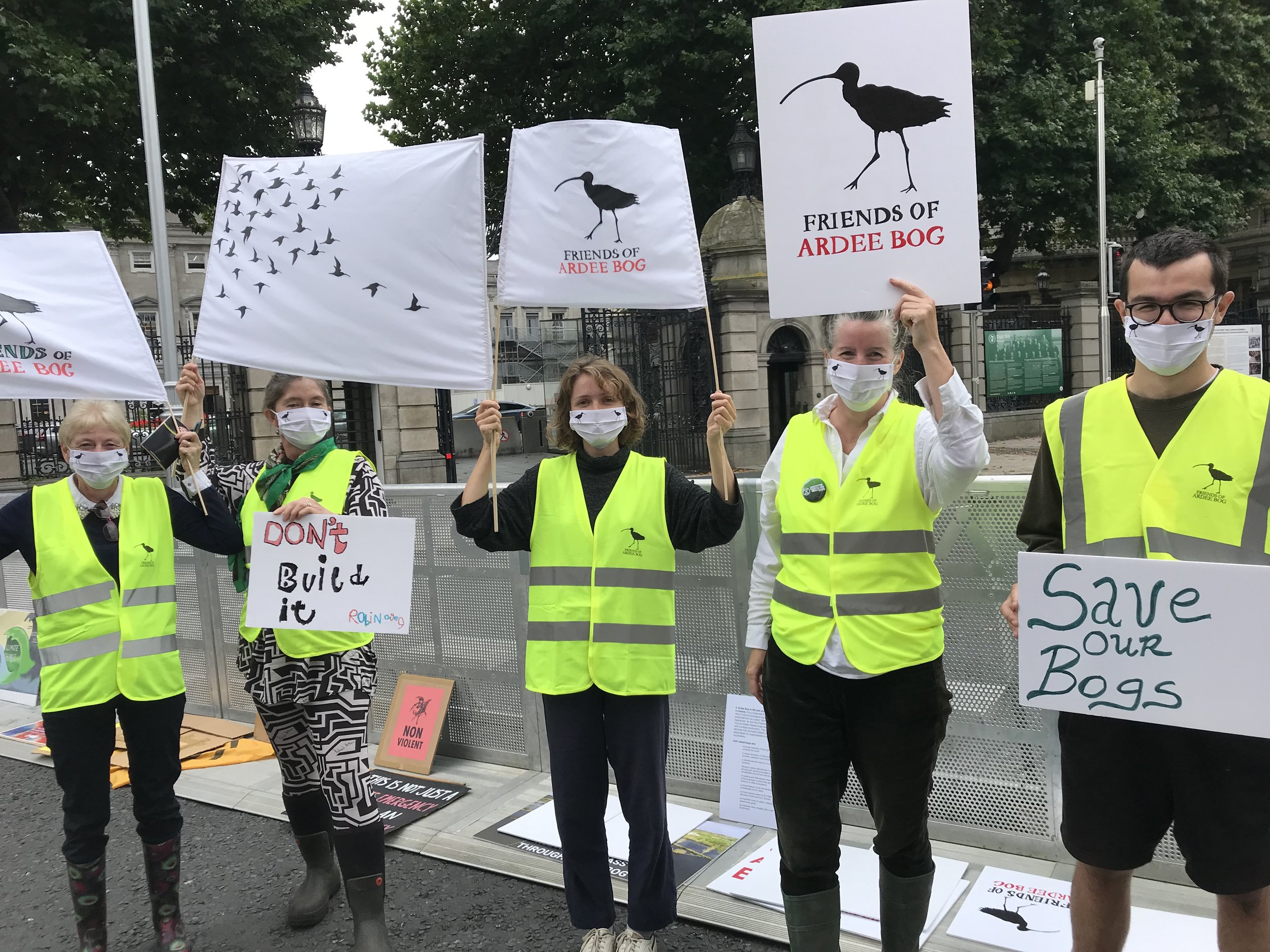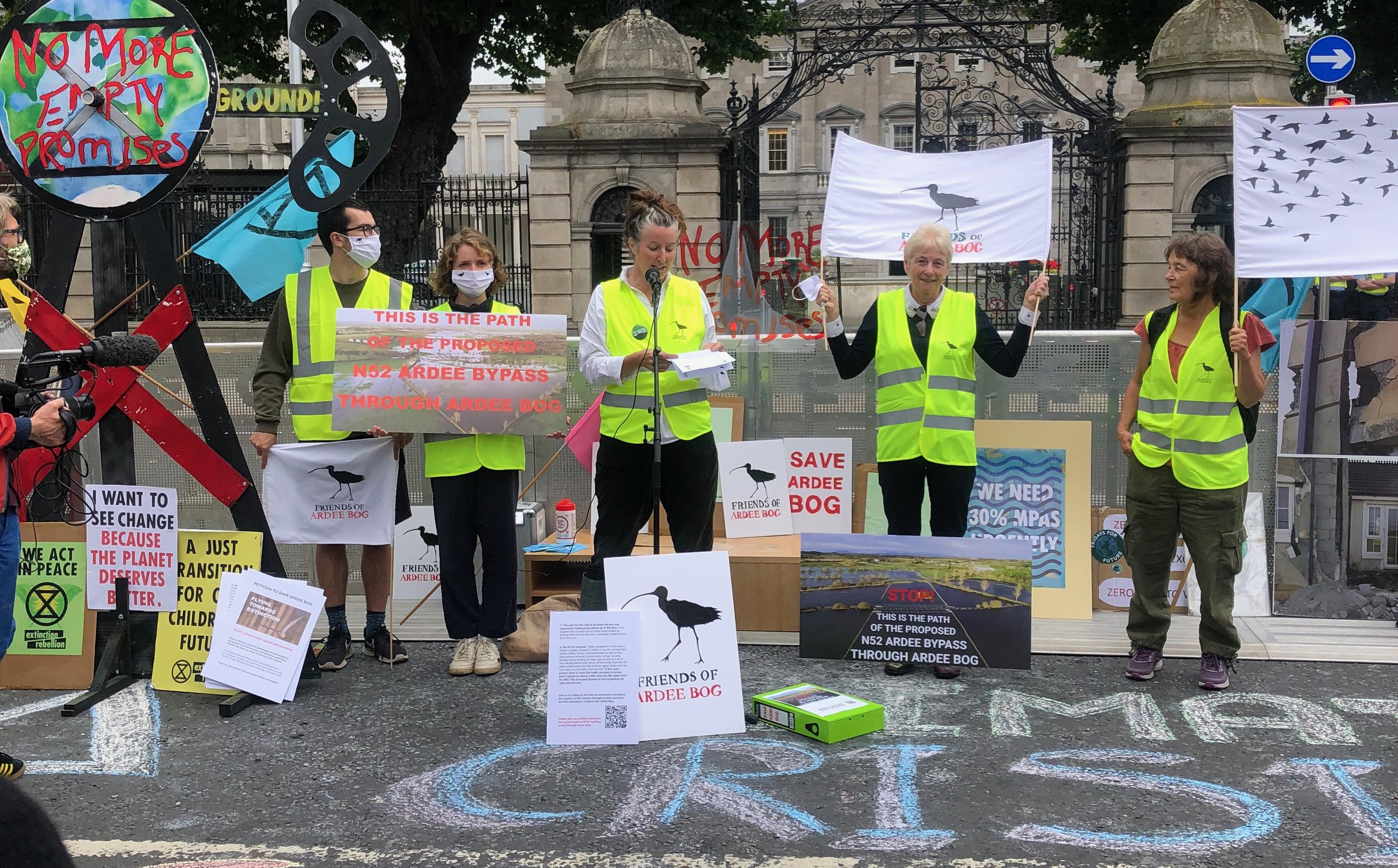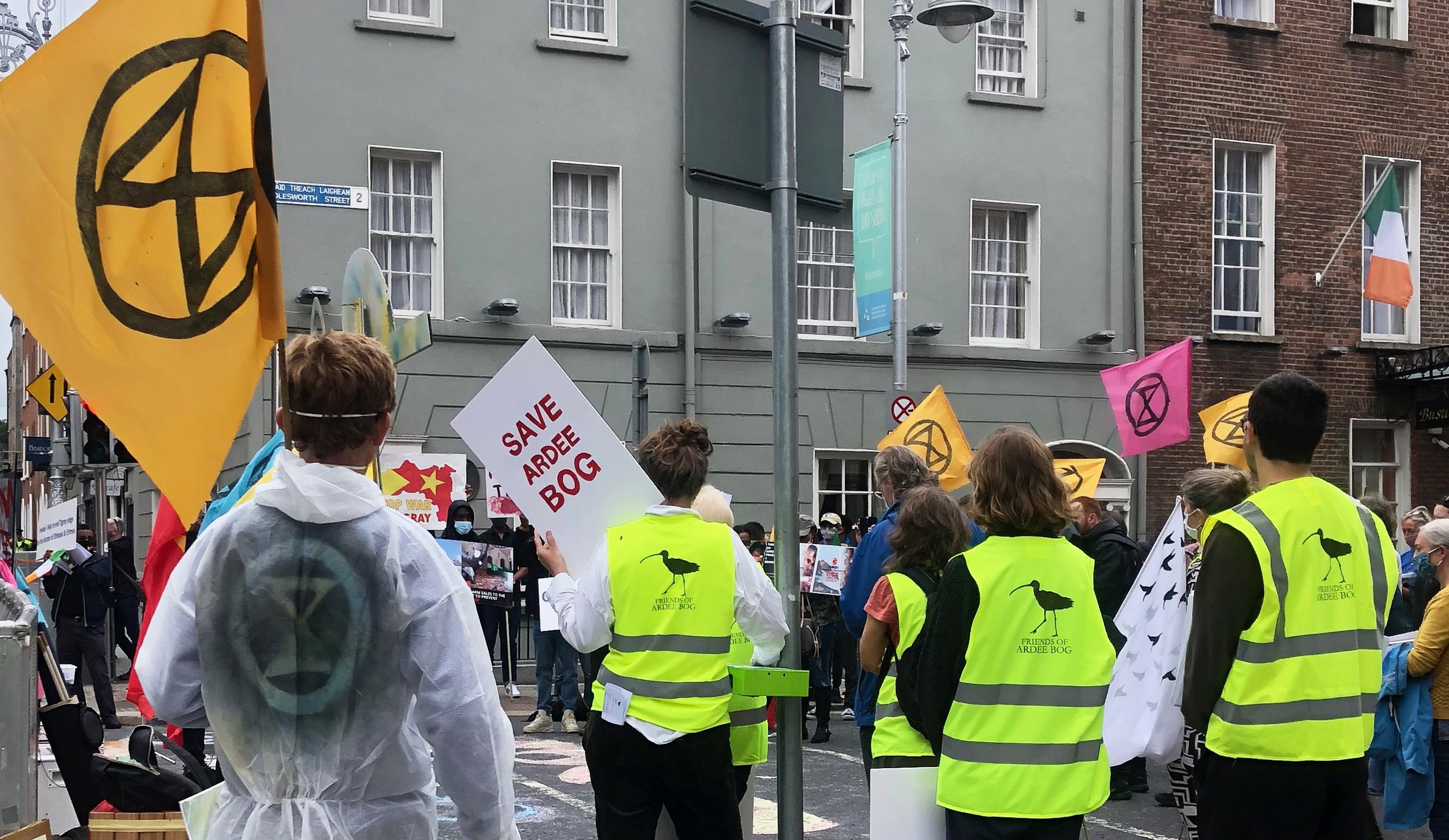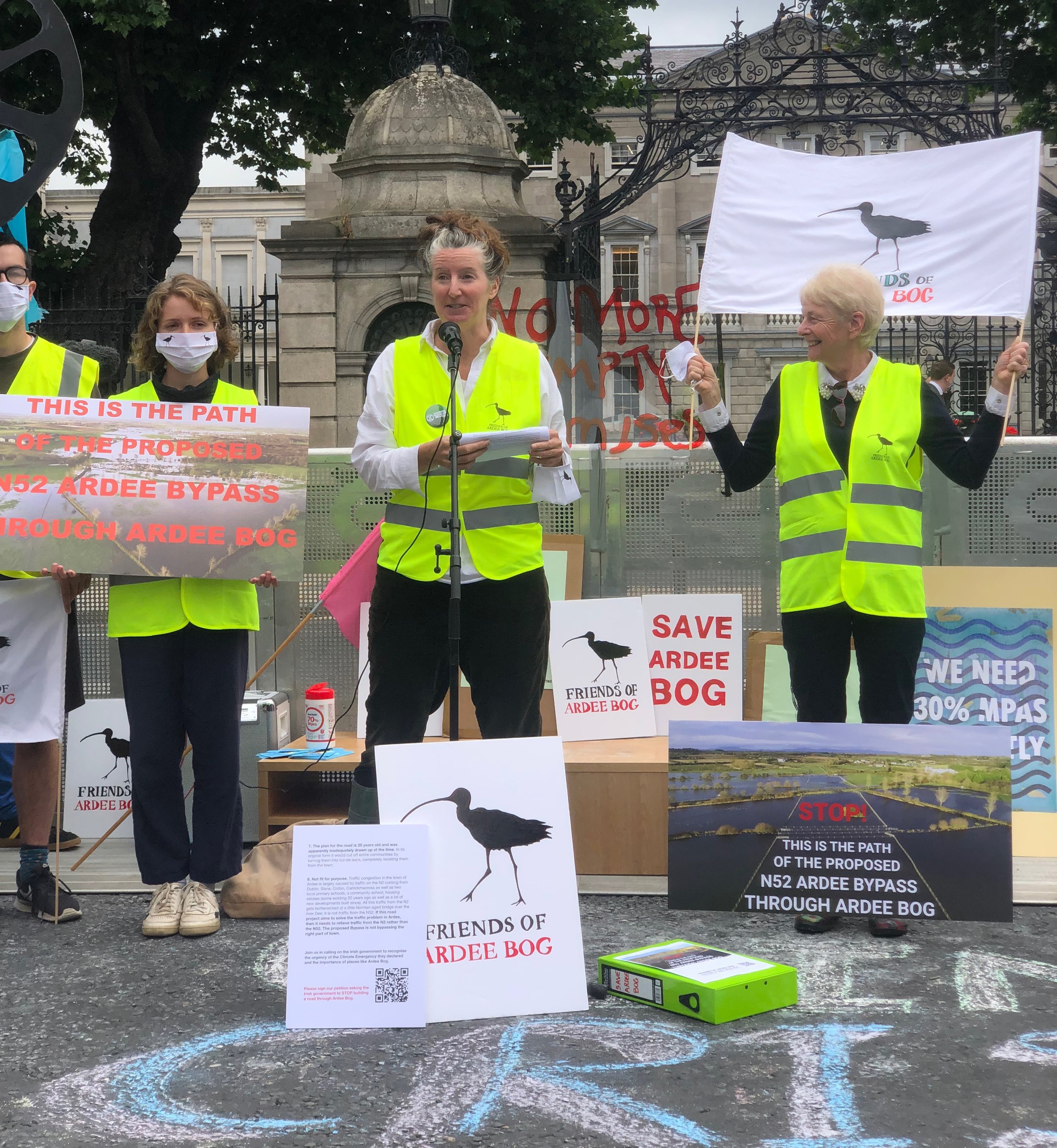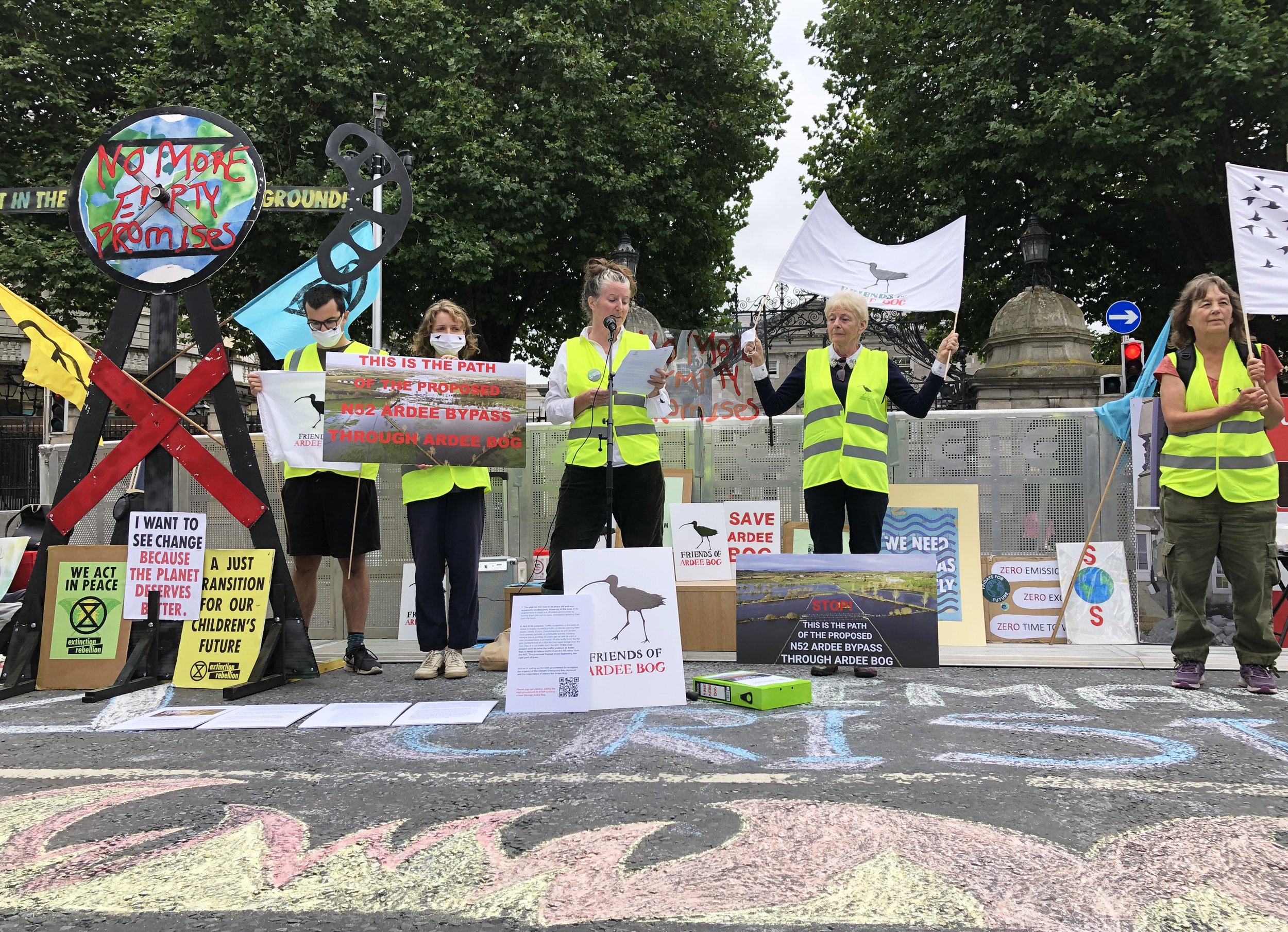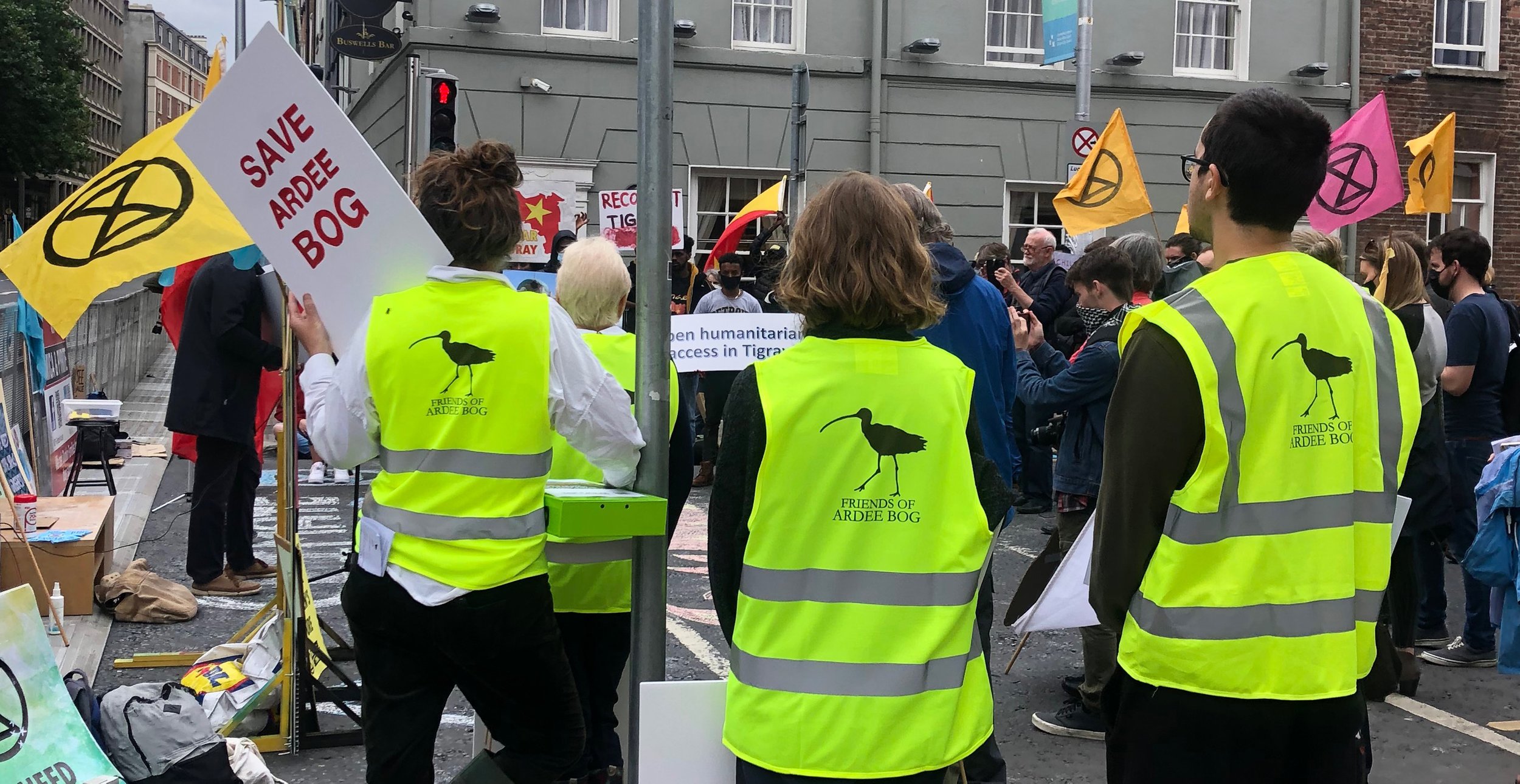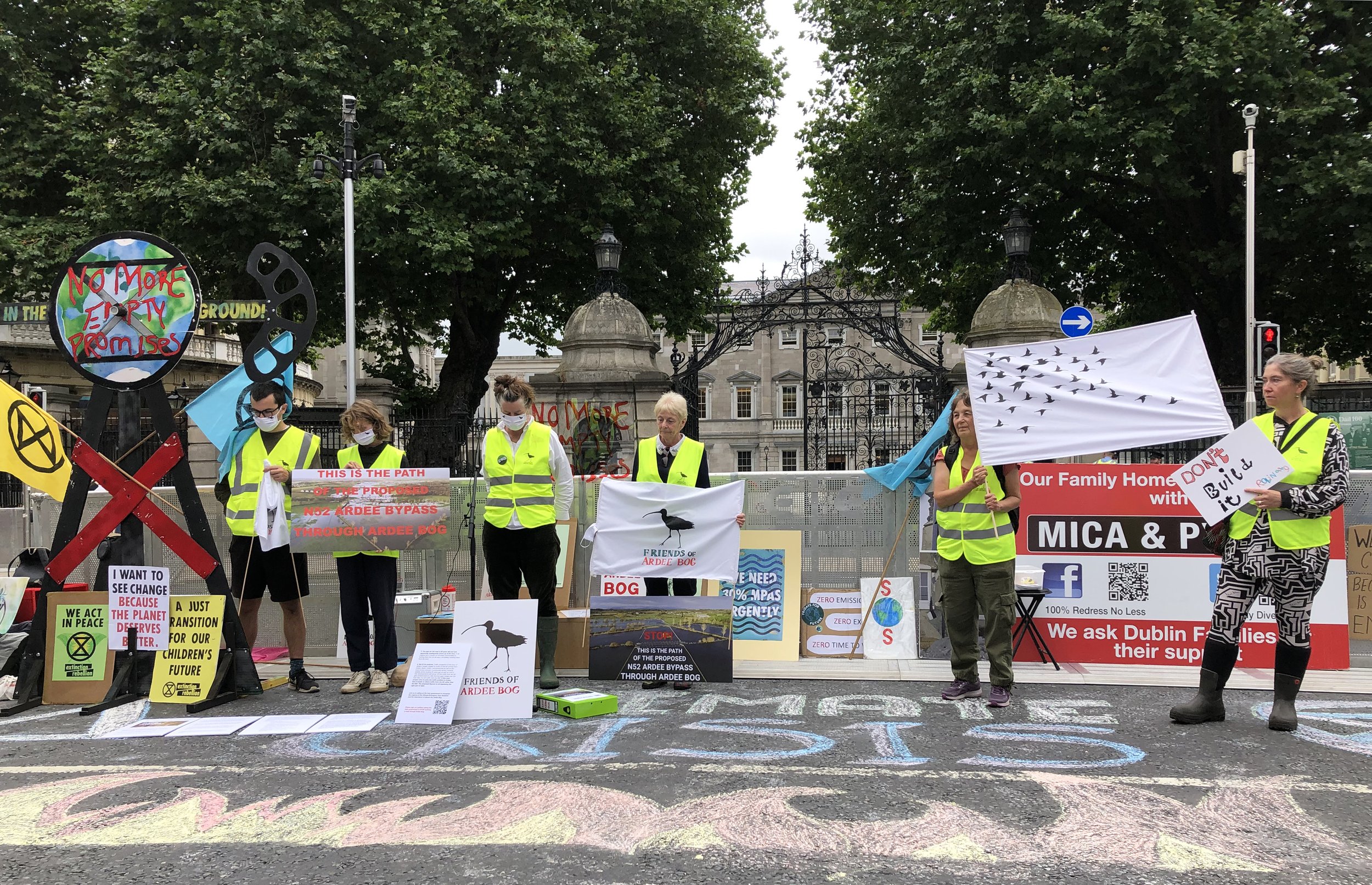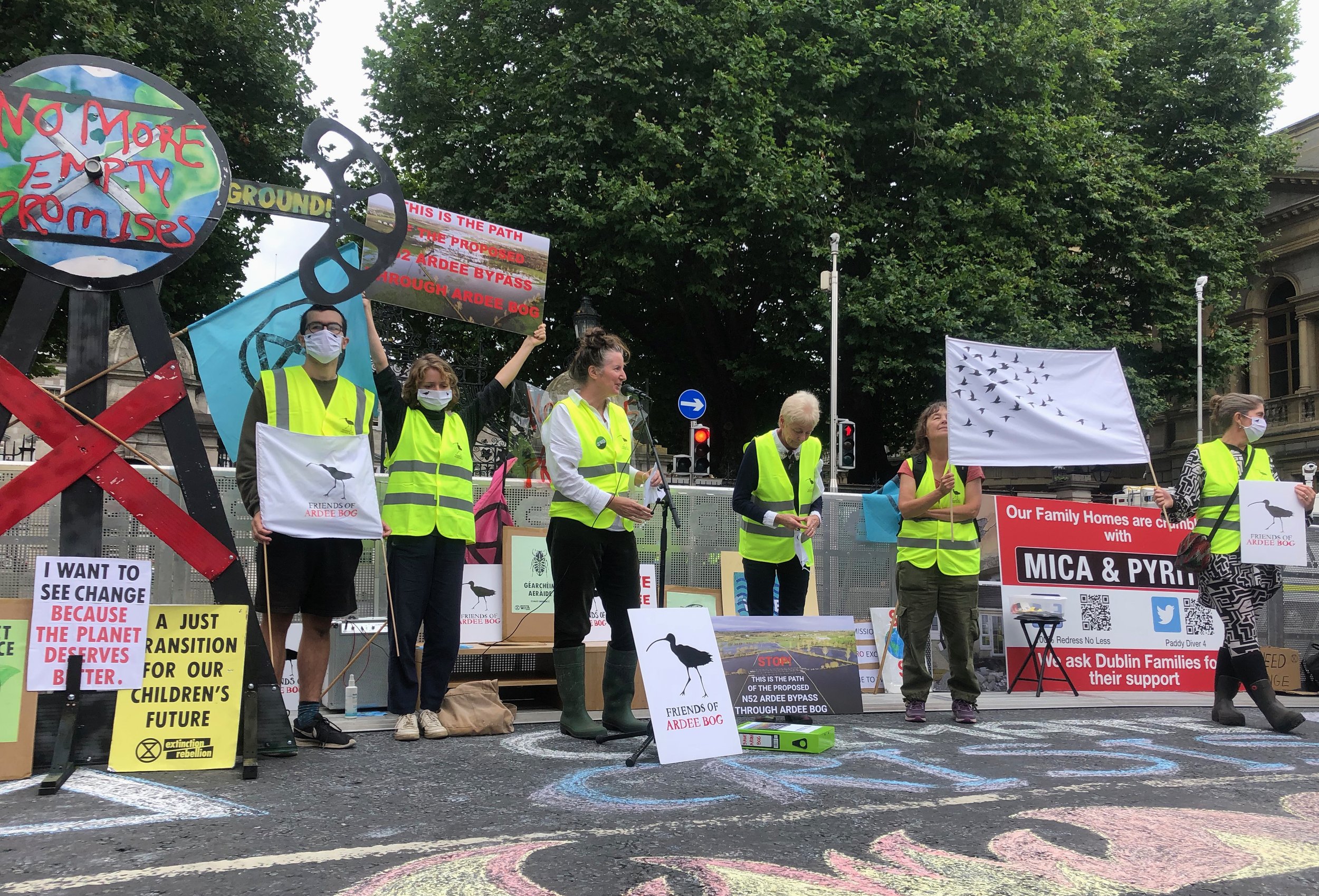September 15, 2021
FRIENDS OF ARDEE BOG JOINED FORCES WITH EXTINCTION REBELLION TO CALL ON IRISH GOVERNMENT TO SAVE ARDEE BOG & IRELAND’S PEATLAND HERITAGE
Friends of Ardee Bog (FAB) and Extinction Rebellion (XRI) are calling on the Minister for Transport and Minister for the Environment, Climate and Communications, Eamon Ryan TD, to uphold the law and confront the Climate Emergency by stopping Ecocide, embracing the Rights of Nature and halting the N52 Ardee Bypass from being built through Ardee Bog and its supporting habitat.
Members of Friends of Ardee Bog travelled to Dublin on Wednesday, September 15th to deliver their petition to Minister Eamon Ryan. He was too busy to meet with them, so we held a Silent Vigil outside the gates of Dáil Éireann. It was part of a Climate Rally organised by XRI on the first day the Dáil resumes.
"We are calling out the disconnect between the government’s words and lack of Climate Action. The message is clear: Ireland declared a Climate Emergency in May 2019. We want to know; Why is the Irish government now building a road through a bog and a designated Flood Zone? "
We held a Silent Vigil for Irish Curlews, who feed and possibly nest where the proposed road is to be constructed, before delivering our petition to Minister Malcolm Noonan. The petition has over 10,700 signatures, including local residents and international supporters; Rebecca Solnit, Robert Macfarlane, Dara McAnulty, Saoirse McHugh, Alice Maher, Manchán Magan, Mary Colwell.
Peatlands have been described as Ireland's rainforest. Bogs play a vital role in mitigating the effects of the climate crisis by storing vast amounts of carbon. Irish peatlands hold dramatically more carbon than agriculture or forestry. Raised bogs, like Ardee Bog, take ten thousand years to form. Bogs are our most important long-term carbon sink. They sequester and store atmospheric carbon for thousands of years. The IPCC estimates that Ireland’s peatlands store 1085 mega tonnes of carbon. Ireland’s Climate Action Plan states that “Peatlands represent 64% of our total soil organic carbon stock, representing the largest store of carbon in the Irish landscape.”[1] Ireland’s raised bogs are on the verge of extinction.[2]
The Irish Peatland Conservation Council (IPCC) says “Ardee Bog is the very last and most easterly raised bog within County Louth and the Republic of Ireland.”[3] The Louth Wetlands Identification survey designated Ardee Bog as National Grade B importance.[4]
Curlews are feeding and possibly nesting in Ardee Bog. Curlews are one of the most iconic birds of the Irish countryside but the Curlew Task Force has reported that there has been a 96% decline in numbers since the 1980s.[5] The Curlew is on the Red List of endangered birds and in danger of extinction in Ireland.[6]
The Curlew may become extinct as a breeding species in Ireland within 5–10 years.[7] The proposed N52 Ardee Bypass, on its present course, will destroy the habitat the Curlew depend on for feeding and possibly nesting. If they remove this, they will disappear forever from Ardee Bog.8
"We cannot let the Irish government build a road through this designated Flood Zone. If Ireland is serious about being a climate leader, we need to stop the N52 Ardee Bypass on its present route." - an XRI spokesperson said.
Anne Lennon from Friends of Ardee Bog led the local Curlew Survey in 2021. She says “We are running out of time. Curlews are on the brink of extinction in Ireland. We have a moral obligation to protect the habitat that supports Curlew and other native species such as Lapwing, Bats, Irish Hare, Owl and so on. They need this ecosystem to survive. Imagine Ireland without the unique call of the Curlew? How do we explain our failure to ensure their survival to the next generation? Lose the peatland that supports them and you lose a vital ecosystem needed by humanity as much as nature.”9
Some of Earth's greatest landscapes are threatened by increased road construction, including the raised bog outside the town of Ardee. “Enough is enough. This is ecocide. We cannot stand by while decisions are being made that will drastically affect the future wellbeing of those on this island.” Extinction Rebellion.
"Let’s leave the black butter, as Seamus Heaney called it, where it belongs: in the ground."
CLICK HERE TO WATCH A VIDEO ON THE IRISH TIMES WEBSITE.
[1] IPCC on Peatlands as Carbon Sinks: https://www.ipcc.ie/a-to-z-peatlands/irelands-peatland-conservation-action-plan/peatland-actionplan/climate-change-and-irish-peatlands/
[2] Pádraic Fogarty, “The Battle to Save the Bogs” in Whittled Away: Ireland’s Vanishing Nature, 2017, page 223.
[3] In 1990 and 1998 the (IPCC) surveyed Ardee Bog, identifing a core area for conservation surrounded by a buffer zone of supporting habitat.
[4] Louth Wetlands Identification Survey 2011; Foss, Crushel, O Loughlin & Wilson (Peter Foss surveyed Ardee pNHA specifically where the road is routed)
[5] Curlew Task Force: https://www.npws.ie/research-projects/animal-species/birds/curlew-task-force
[6] https://www.nationalruralnetwork.ie/wp-content/uploads/2019/02/The-Conservation-of-Breeding-Curlew-in-Ireland-NRN-Website.pdf
[7] The Clock is ticking to Save the Curlew: https://www.irishtimes.com/news/science/the-clock-is-ticking-to-save-the-curlew-1.3470968 8 Illegal removal of hedgerows, mature trees, and the installation of fencing in October 2019 (after an Oireachtas meeting ordered all work to stop while design was reviewed) has already destroyed at least two known sites where Curlews were feeding and possibly nesting. 9 This is without factoring the cost benefit analysis of the N52 Ardee Bypass: The cost has risen from 19 million to 34 million Euros before the contract has been put out to tender. Not to mention the EU fines that Ireland will incur for breaches of Environmental Guidelines and Directives. Who will pay these fines; “Irish taxpayers”? Ardee’s traffic congestion could be addressed with more creative solutions rather than permanently destroying a Bog habitat which is needed by both nature and people to mitigate the negative impact of climate change.
Photographs by Bryony Archer, Fiona Crawley, Paddy Forlenza, Kevin Handy, Katie Holten, and Matthew Wilkinson.

